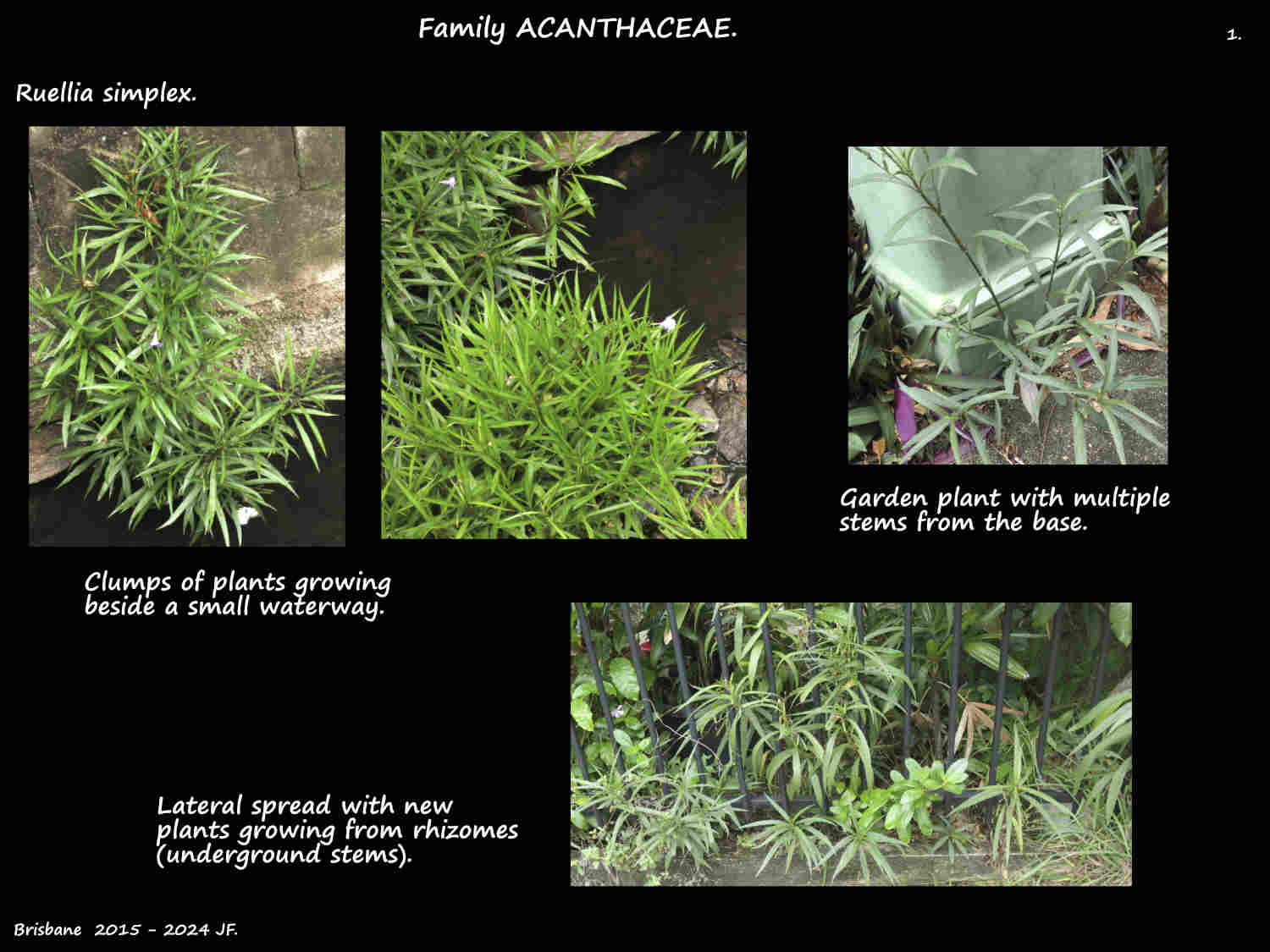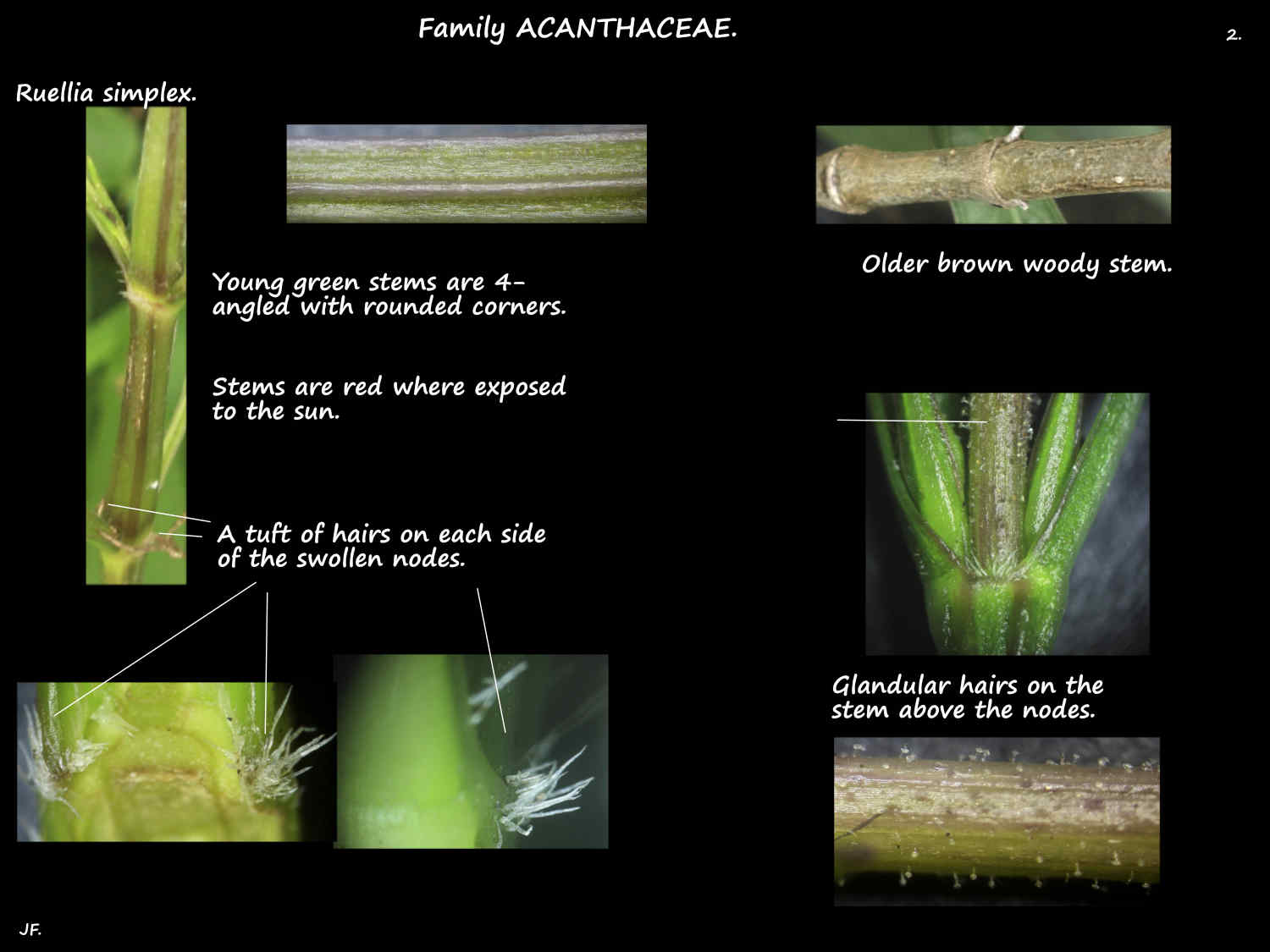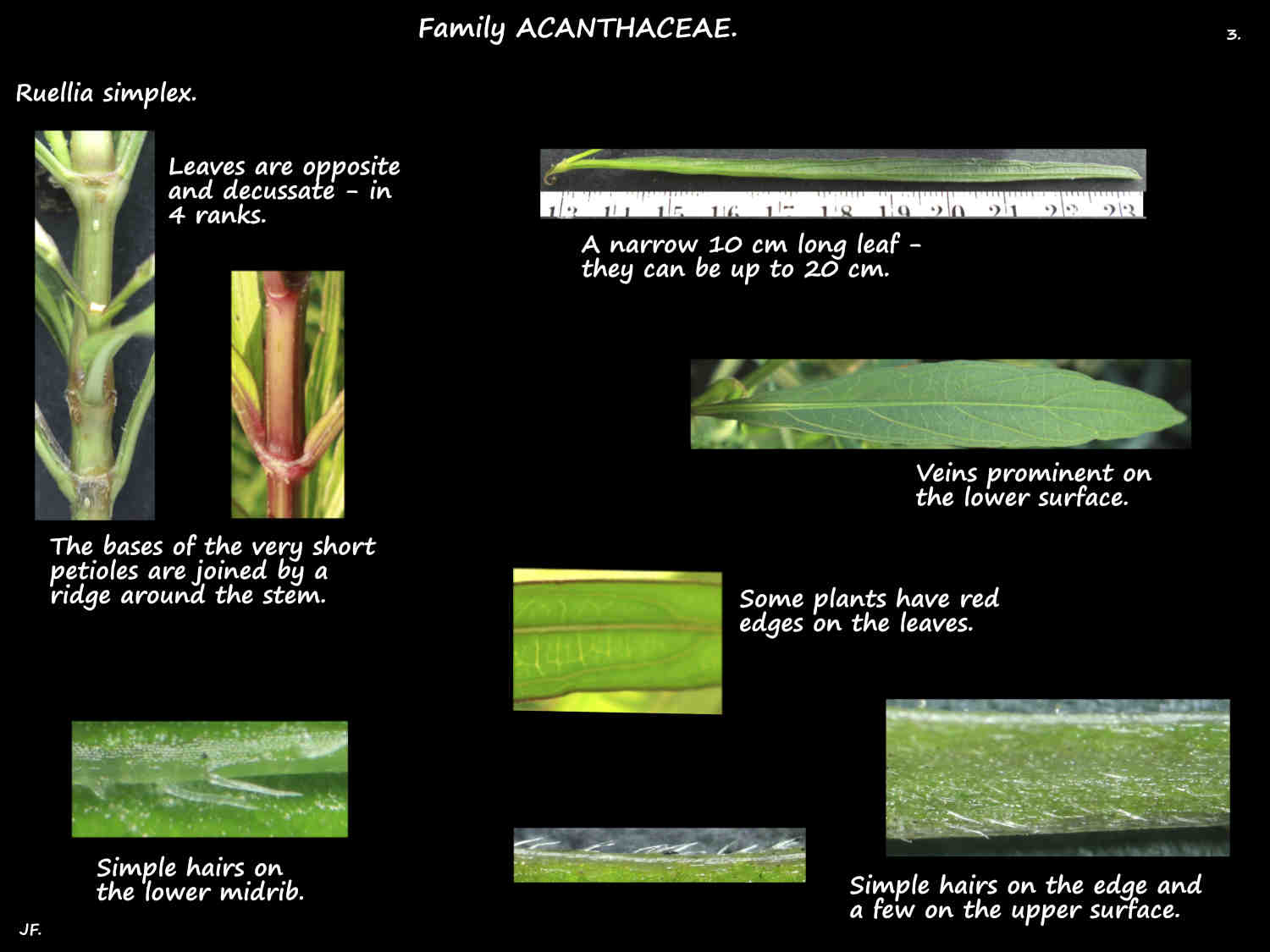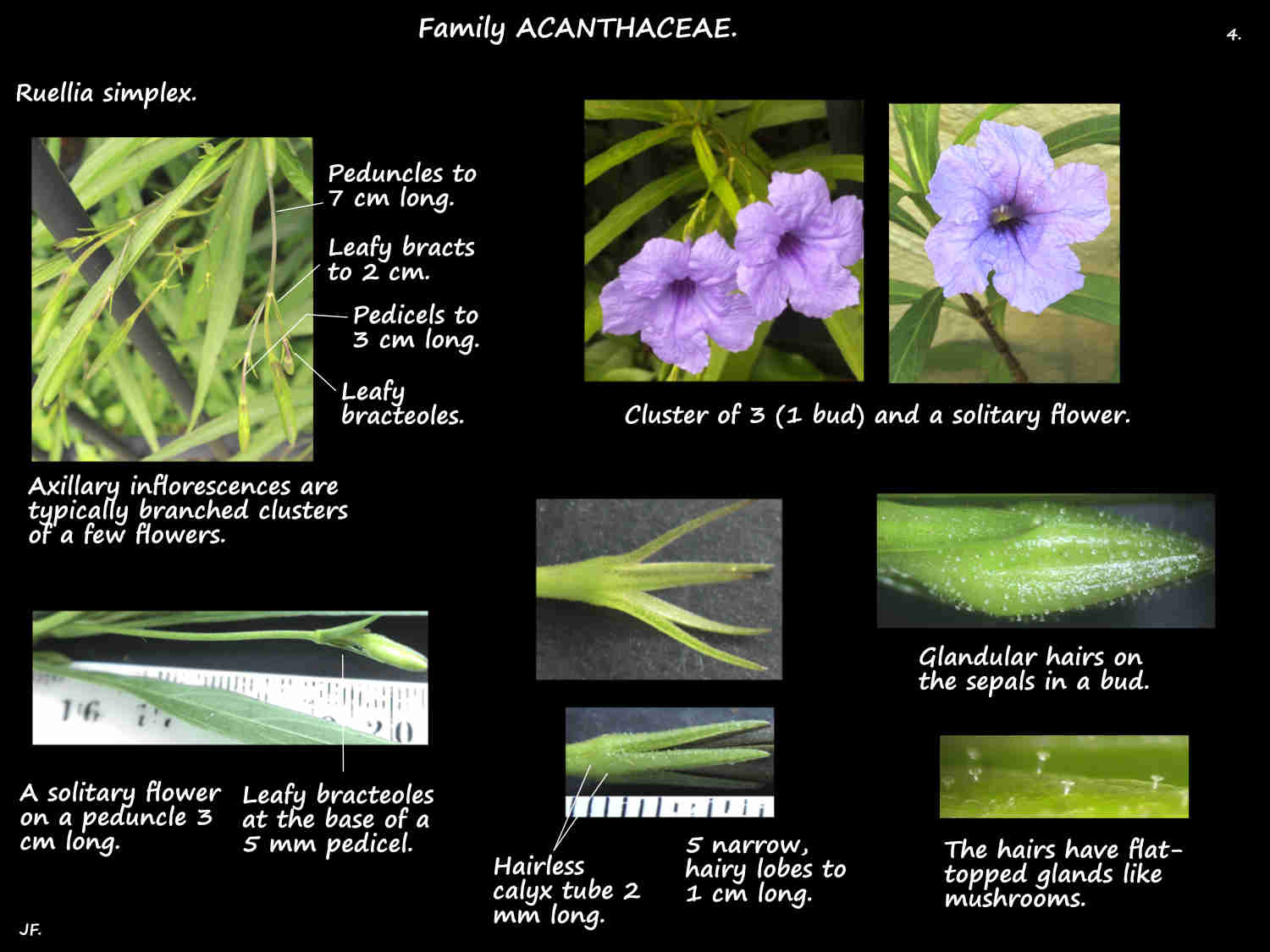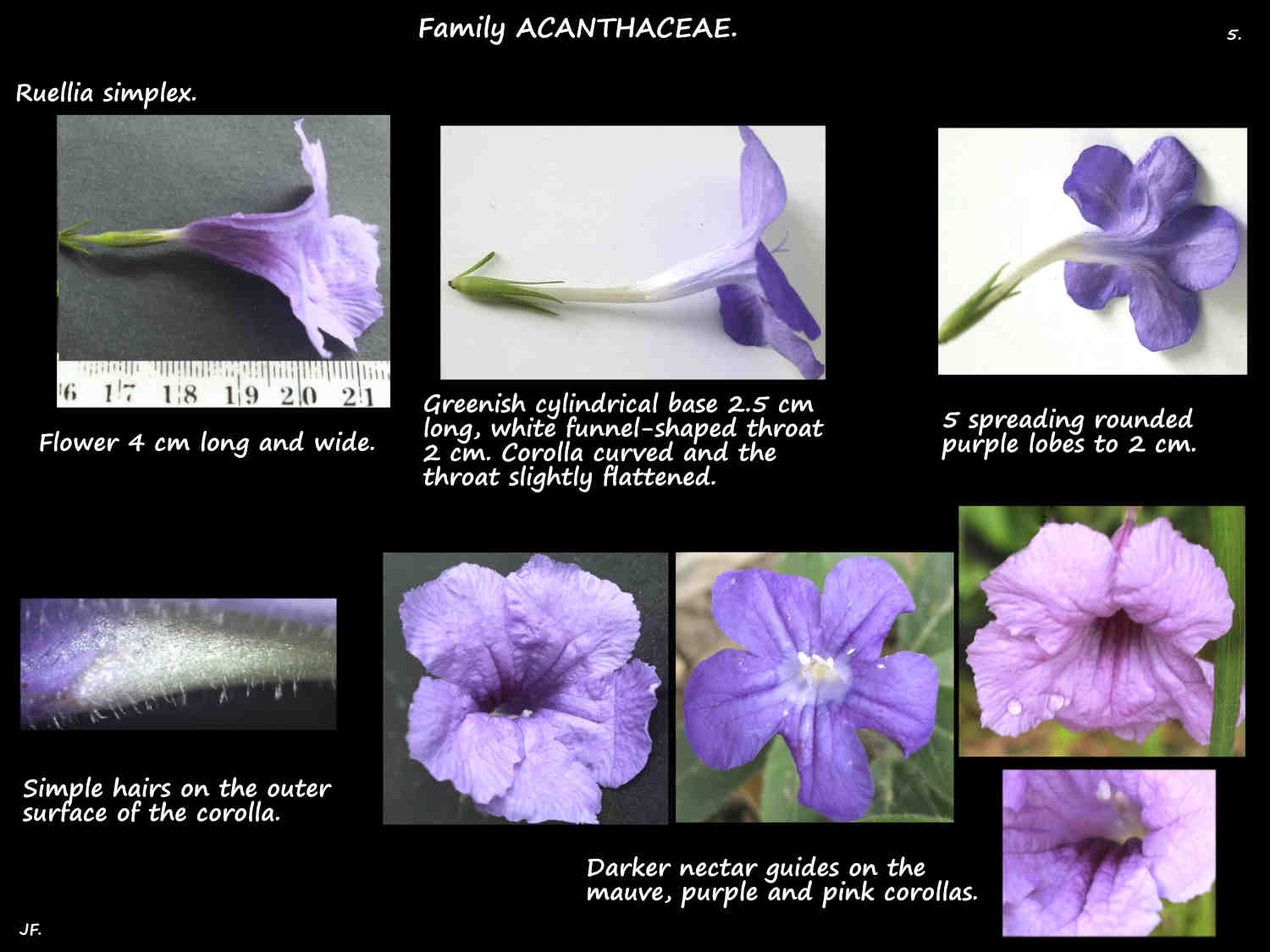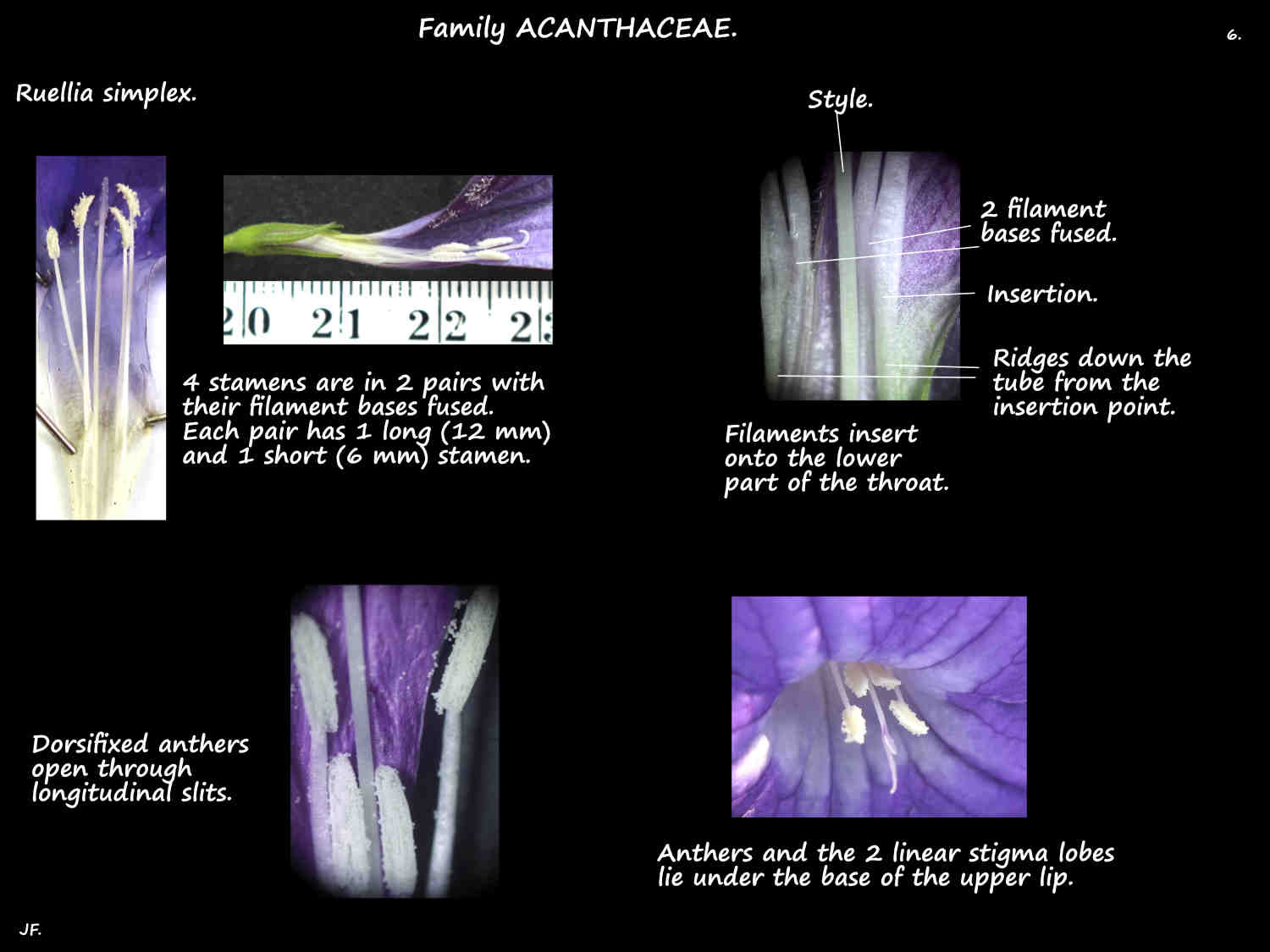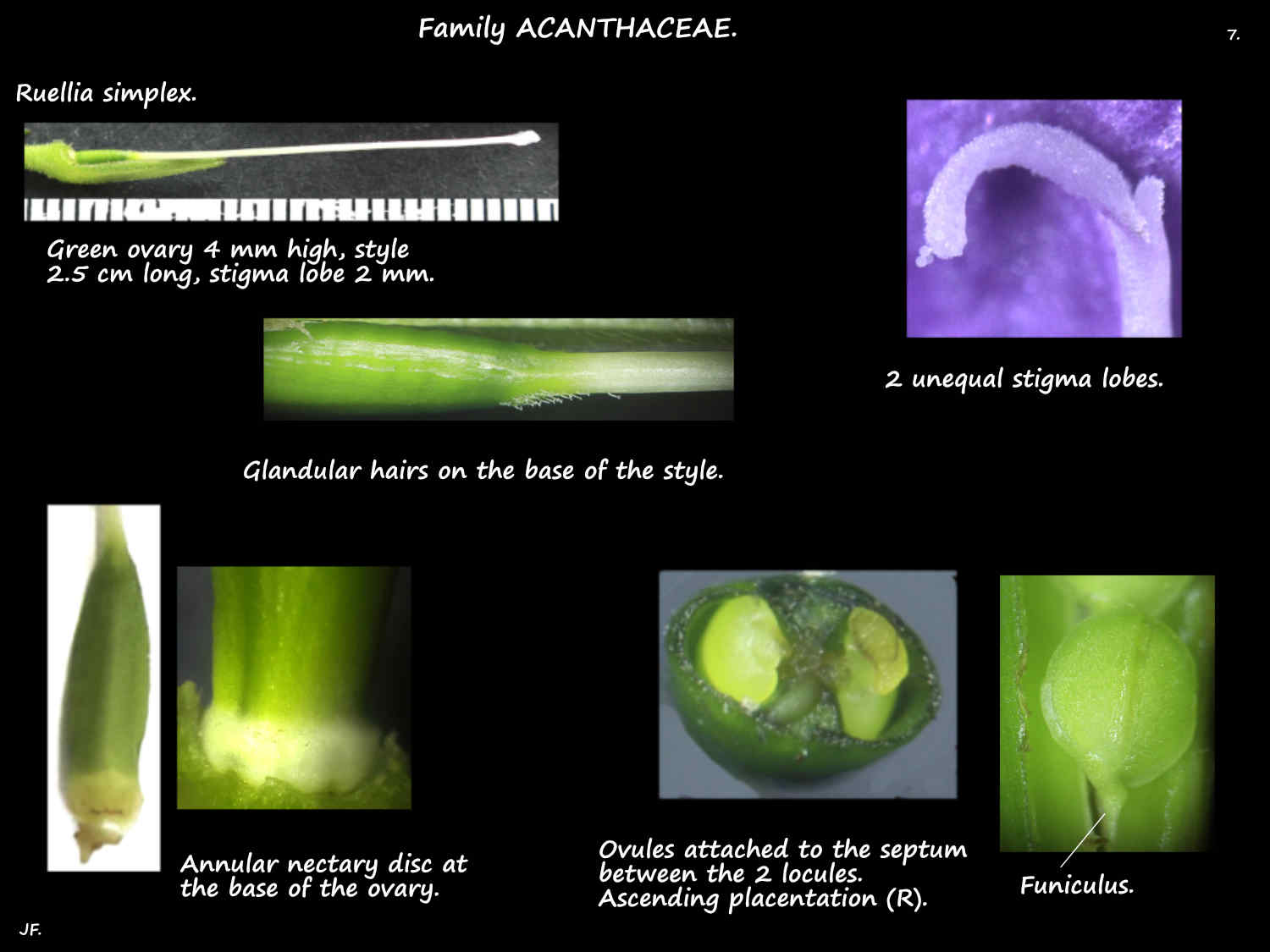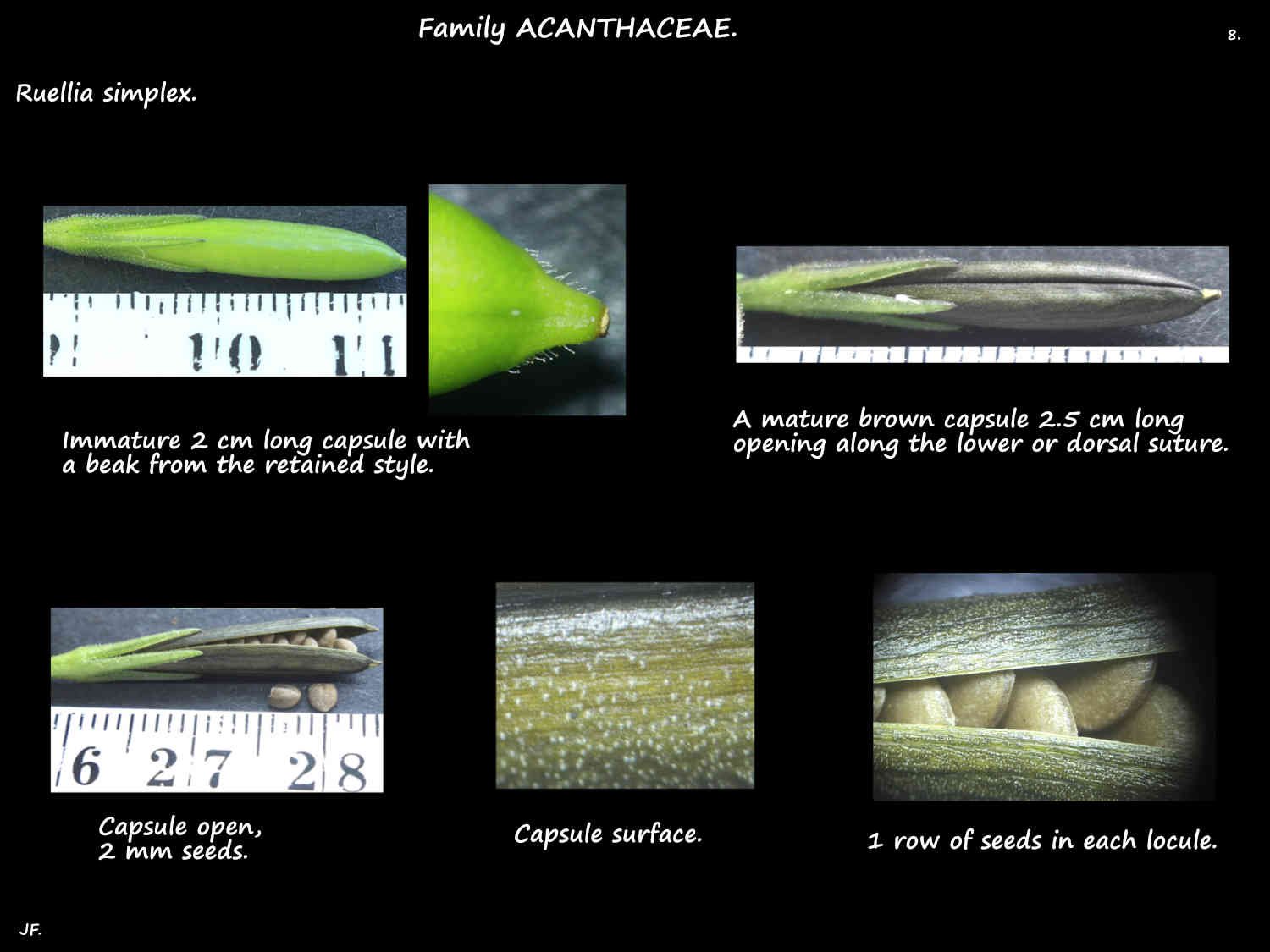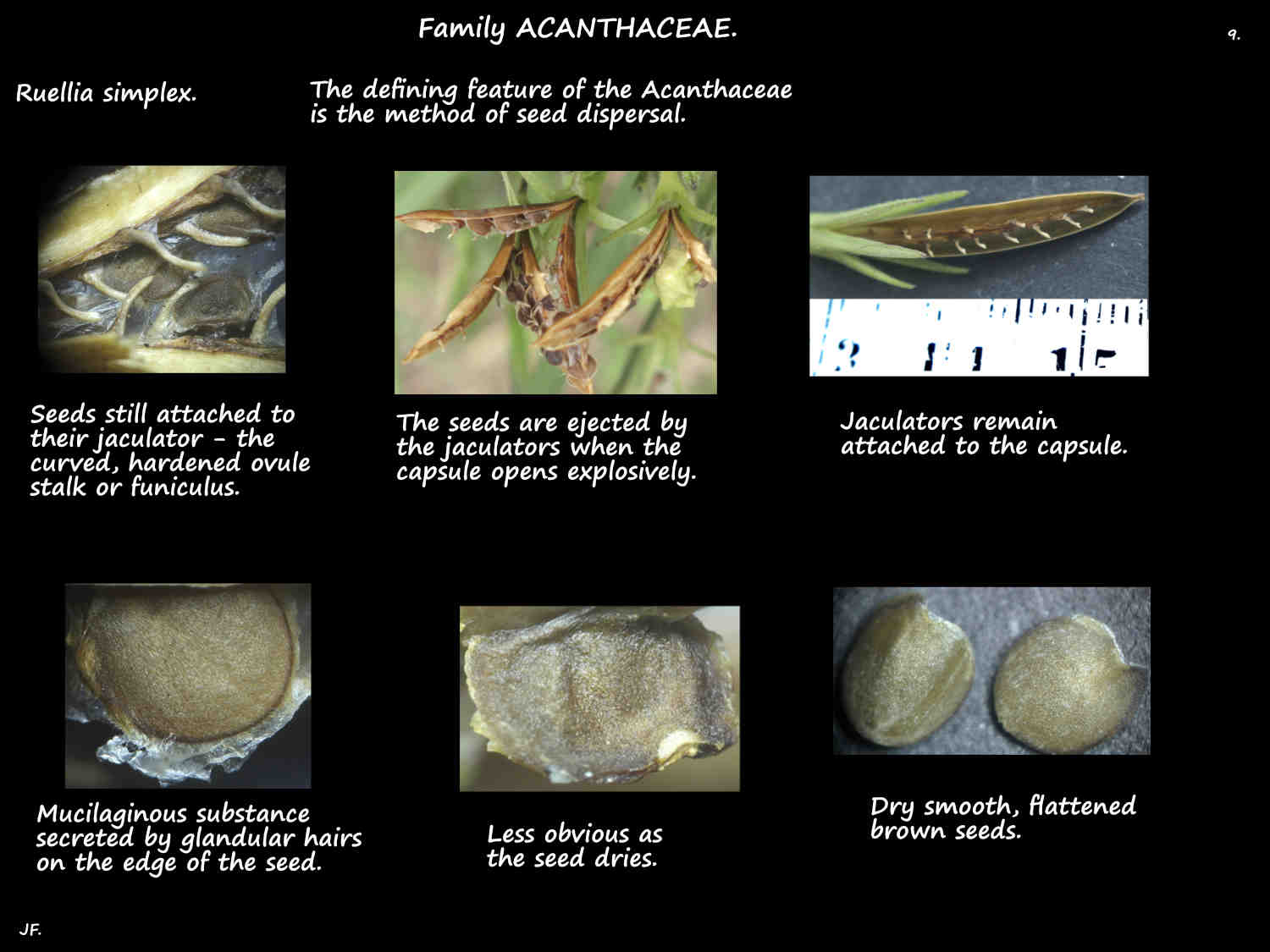Ruellia simplex.
Still sometimes seen as R. caerulea or R. brittoniana it has been renamed R. tweediana in Queensland but this name is not recognised by Plants of the World Online (Kew).
The Wild, Creeping or Mexican Petunia is native to Mexico, South America and the Caribbean.
Now a common weed but occasionally seen in gardens it is naturalised in S. E. Queensland.
Typically seen along creeks and any wet area they are erect herbs up to 1 m high.
They have a taproot, fibrous roots and rhizomes (underground stems).
They can form large dense clumps with new plants formed from the rhizomes.
There are many branched stems from the base.
Young 4-angled stems are red on the sides exposed to the sun.
The swollen nodes have a tuft of simple hairs on each side.
Young shoots have some hairs but these are lost on older stems.
The leaves are opposite and decussate (in 4 ranks).
The blades taper into short petioles whose bases are joined by a ridge around the node.
The narrow elliptic or lance-shaped blades are up to 20 cm long and 2 cm wide with a pointed tip.
There are hairs on the edge and the lower surface sometimes has a few hairs and glands.
The pinnnate veins are prominent on both surfaces.
Axillary inflorescences are branched clusters of a few flowers.
They are on a peduncle up to 7 cm long that has glandular hairs.
The leafy bracts, up to 2 cm long have many glands.
Pedicels, up to 3 cm long and with leafy bracteoles have hairs with flat-topped glands.
The 2 mm long hairless calyx tube has 5 lobes on the rim.
The lobes, up to 1 cm long and 2 mm wide are unequal in length.
The green to reddish or purplish lobes have hairs and stalked glands.
The corolla, up to 4 cm long and 4.5 cm across has 5 mostly fused petals.
There is a narrow tubular base then a wider 2 cm long funnel-shaped throat.
The 5 roundish lobes are in 2 lips with 2 lobes in the upper lip and 3 in the lower.
The tube is pale green, the throat whitish and the pink, purple, lavender or bluish lobes are up to 2 cm long and wide.
The corolla has simple and glandular hairs on the outer surface and the lobes have darker nectar guides (veins).
The 4 stamens are in 2 pairs of 1 long and 1 short with their filaments fused at the base.
6 and 12 mm long they are inserted onto the throat and they lie so the anthers sit just under the base of the upper petal lobes beside the stigmas.
The dorsifixed anthers open through longitudinal slits.
The superior green ovary, around 3.6 mm high has 2 locules each with around 15 ovules.
There is a nectary disc up to 2 mm high under the ovary.
The fruit are cylindrical to slightly club-shaped capsules up to 2.5 cm long.
They open explosively and the seeds are thrown out by the their jaculator (the hardened ovule stalk).
J.F.

